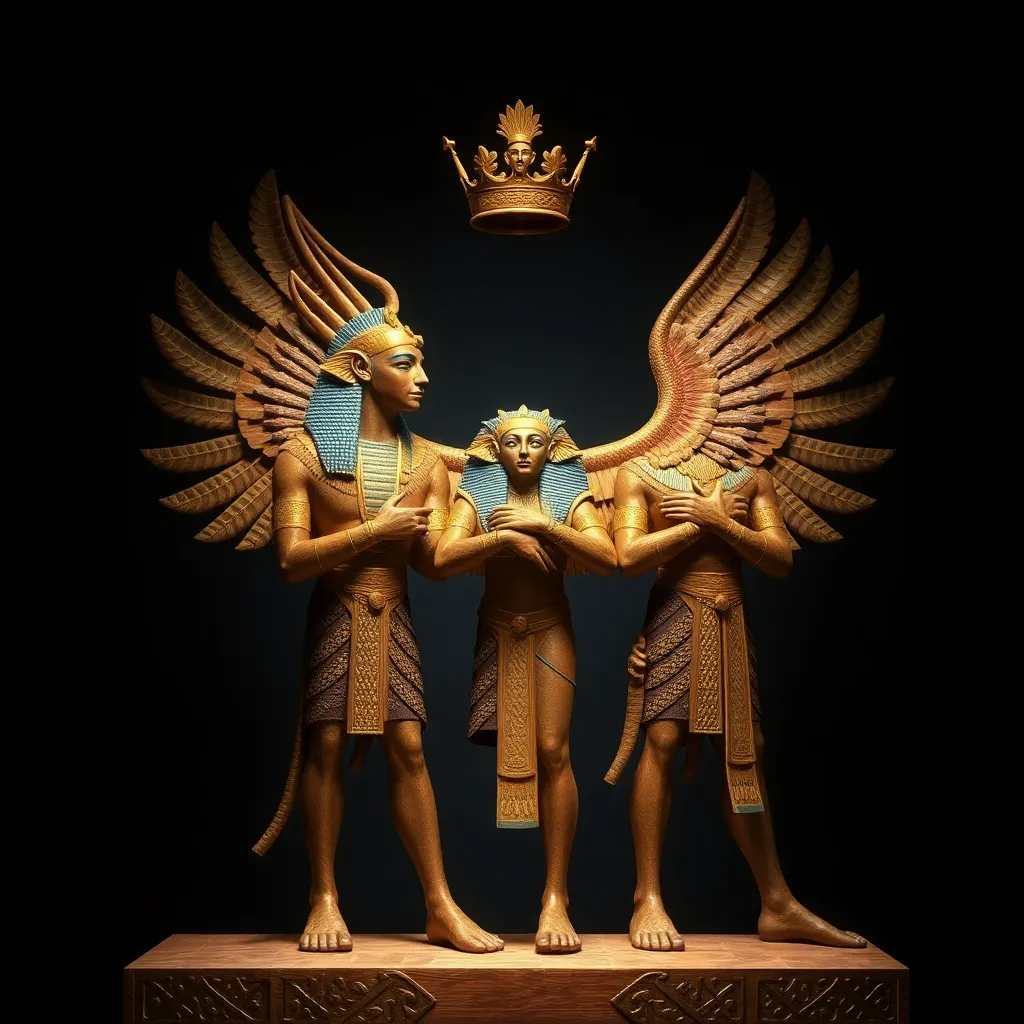The Gods of Ancient Egypt: Their Influence on Ancient Egyptian Art, Literature, and Culture
I. Introduction
Ancient Egyptian religion and mythology are among the most fascinating aspects of human history, characterized by a complex pantheon of gods and goddesses who played vital roles in the lives of the ancient Egyptians. Religion was interwoven with every aspect of daily life, influencing everything from governance to personal conduct. The gods were believed to be intimately involved in the world, overseeing the natural order and human affairs, thus shaping the cultural landscape of ancient Egypt.
This article aims to explore the profound influence of these deities on various cultural expressions, particularly in art, literature, and rituals. By examining the pantheon of gods and their manifestations in different cultural forms, we can gain a deeper understanding of how the divine shaped the lives and beliefs of the ancient Egyptians.
II. The Pantheon of Ancient Egyptian Gods
The ancient Egyptians worshipped a vast array of gods, each representing different aspects of life, nature, and the cosmos. The major deities included:
- Ra: The sun god and a central figure in Egyptian mythology, representing creation and the cycle of life.
- Osiris: The god of the afterlife, resurrection, and agriculture, symbolizing life, death, and rebirth.
- Isis: The goddess of magic, motherhood, and fertility, revered for her protective qualities and healing powers.
- Horus: The sky god, often depicted as a falcon, representing kingship and protection.
In addition to these major deities, there were numerous lesser-known gods, each with specific roles and attributes that enriched the mythology. The concept of Ma’at was particularly significant, representing truth, balance, and cosmic order, which was believed to be essential for maintaining harmony within the universe.
III. Artistic Representations of the Divine
Art in ancient Egypt was primarily functional and religious, serving to honor the gods and ensure their favor. The iconography of the gods was carefully crafted, with each deity depicted in a specific manner, often accompanied by symbolic elements. Some key aspects include:
- Iconography: Gods were represented with distinct attributes; for example, Ra was often depicted with a sun disk, while Osiris was shown as a mummified king.
- Temples and Monuments: Large structures were dedicated to the gods, such as the Temple of Karnak and the Pyramids, which served as both places of worship and tombs for pharaohs.
- Symbolism in Art: Reliefs, paintings, and sculptures often conveyed deeper meanings, using colors and forms to represent the divine and the principles of Ma’at.
IV. Literature and Mythology
Literature in ancient Egypt was rich with narratives that revolved around the gods and their interactions with humanity. Some notable elements include:
- Creation Myths: Various legends explain the origins of the world and humanity, with gods like Atum and Ptah playing central roles in creation narratives.
- Religious Texts: Important texts such as the Pyramid Texts and the Book of the Dead contained spells, hymns, and prayers aimed at guiding the deceased in the afterlife and securing favor from the gods.
- Storytelling Traditions: Oral histories and tales involving the gods were passed down through generations, often conveying moral lessons and cultural values.
V. Festivals and Rituals: Celebrating the Divine
Festivals played a crucial role in ancient Egyptian society, providing opportunities to honor the gods and seek their blessings. Key aspects include:
- Major Religious Festivals: Celebrations such as the Opet Festival and the Wepet-Renpet (New Year) were significant events that included processions, offerings, and rituals.
- Rituals and Ceremonies: Daily offerings and elaborate ceremonies were conducted to appease the gods, often involving music, dance, and the presentation of food and incense.
- Role of Priests: Priests and priestesses were the intermediaries between the gods and the people, performing rituals and maintaining temples to ensure divine favor.
VI. The Influence of Gods on Daily Life and Society
The influence of the gods extended far beyond religious practices, permeating every aspect of daily life. This influence can be observed through:
- Governance and Law: Pharaohs were considered divine rulers, believed to be chosen by the gods, which legitimized their authority and laws.
- Social Structure: The priestly class held significant power due to their role in religious practices, shaping the social hierarchy.
- Customs and Daily Practices: Everyday customs, from the way people dressed to the rituals performed in households, reflected the reverence for the gods.
VII. The Legacy of Ancient Egyptian Gods
The legacy of the gods of ancient Egypt continues to resonate in modern culture, showcasing their enduring influence. Key aspects include:
- Modern Representation: Egyptian gods have been depicted in various contemporary media, including films, literature, and art, often symbolizing mystery and ancient wisdom.
- Archaeological Discoveries: Excavations and findings have revealed insights into ancient beliefs, deepening our understanding of how these gods shaped civilization.
- Continued Fascination: The mythology of ancient Egypt remains a subject of fascination, inspiring artists and writers across generations.
VIII. Conclusion
The gods of ancient Egypt profoundly influenced art, literature, and culture, shaping the beliefs and daily lives of the people. Their depiction in art, their roles in literature, and the rituals surrounding them highlight a society deeply connected to the divine. As we reflect on the relevance of these ancient beliefs in today’s world, it becomes clear that the study of ancient Egyptian heritage is crucial for understanding the complexities of human culture. Preserving and studying this rich legacy not only enriches our knowledge of the past but also provides valuable insights into the human experience.




